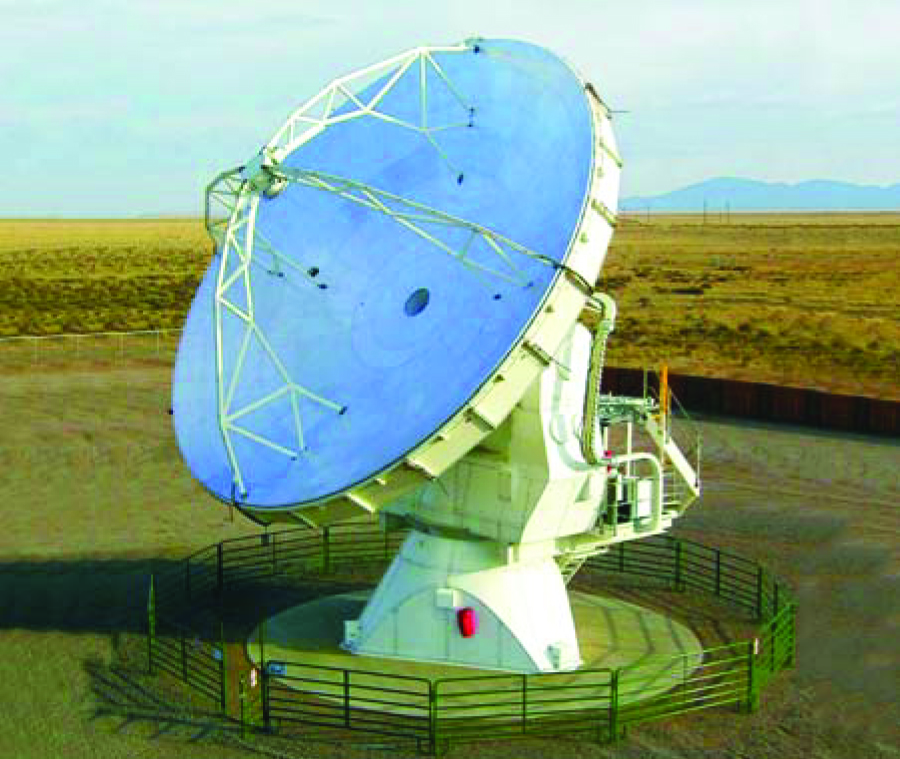US Ground-Based Telescopes under the Microscope
DOI: 10.1063/1.2138412
NSF is conducting its first examination of spending across all wavelengths in ground-based astronomy. The so-called senior review aims to cut spending by $30 million a year on existing facilities to bolster current top priorities and start paying for future ones.
A committee will “advise us on the balance of programs, and in particular how we might rebalance to make faster progress on new facilities without losing strength at existing ones,” says NSF astronomy division head Wayne Van Citters. He expects the committee to consider financial data and scientific justification from the optical-infrared, solar, and radio astronomy observatories, NSF schemes for cutting spending, various reviews, and input from the astronomy community. Chaired by Roger Blandford, director of the Kavli Institute for Particle Astrophysics and Cosmology at Stanford University, the committee begins meeting this month and is supposed to give NSF its recommendations next spring. (For more information, including a schedule of town meetings, see http://www.nsf.gov/mps/ast/ast_senior_review.jsp
The NSF astronomy budget is about $195 million. “Everything is under the gun,” Van Citters says, except the roughly $30 million a year in grants to individual investigators. Adds Blandford, “It will be painful for all concerned. You are not looking at fat. You are looking at a choice between the very good and the excellent, and you have to sacrifice some of the very good to have a chance to fulfill some of the dreams spelled out in the [2000 astronomy and astrophysics] decadal survey.”
Those dreams include an optical—infrared Giant Segmented Mirror Telescope (GSMT) and a large-aperture synoptic survey telescope—with two projects competing for each. Among the other priorities in the decadal survey are the Telescope System Instrumentation Program, the Advanced Technology Solar Telescope, an upgrade to the Very Large Array in New Mexico, operating the Atacama Large Millimeter Array, and studies of dark energy and the polarized cosmic microwave background. The total tab dwarfs what could be done with $30 million a year. “We know we have tremendously exciting science,” says Van Citters. “If we have scrubbed our program as hard as we can, we will end up with a stronger case for getting future support.”
The senior review “is the right thing to do,” says Indiana University astronomer Caty Pilachowski. “The decadal survey outlined an extremely ambitious and expensive plan. At the time, we didn’t have these huge national commitments—terrorism, the Iraq war, Hurricane Katrina. We need to know what is practical and what is not.”
But broad support for the review doesn’t mean astronomers aren’t nervous about it. The leaders of the optical, solar, and radio observatories say their organizations are threadbare, and that despite flat budgets, they are already investing in future facilities. “It’s a very delicate exercise,” says Fred Lo, director of the National Radio Astronomy Observatory. “If the budget is constant or decreasing, you have to be careful not to damage the current program, since there is no guarantee the new projects will fit the funding profile.”
Forming partnerships with industry, universities, and foreign countries and converting general instruments to single-purpose use are among the ideas for lowering NSF’s costs while keeping telescopes running. Delaying or canceling new facilities is also possible—though the committee won’t be asked how to apply any savings it achieves.
“If we can’t find the free energy we need, we are in trouble,” says John Huchra, vice provost for research at Harvard University and a member of the committee. “If there is no national contribution or effort as part of these new major projects—if, for example, US astronomers don’t contribute to the GSMT—it would be very sad for the country. We could lose the edge we have in astronomy and astrophysics.”

A scramble to find money for the US share of operating the Atacama Large Millimeter Array is a motivating factor for a senior review. Under construction in Chile, ALMA will consist of more than four dozen antennas like this prototype.
NRAO

More about the Authors
Toni Feder. American Center for Physics, One Physics Ellipse, College Park, Maryland 20740-3842, US . tfeder@aip.org





